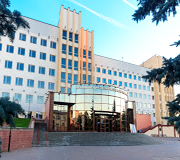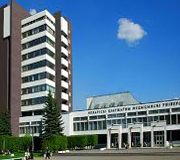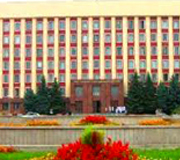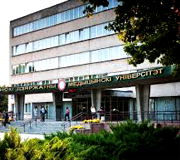Q. Is Belarus an independent country or a part of Russian Federation?
A. Belarus was a part of erstwhile USSR but became independent in 1992. Its official name is Republic of Belarus.
Q. How big is the country? How many people live there? What is their race and religion?
A. Belarus is a landlocked country with an area of 207,000 km. It is situated in the northeast of Europe and has international borders with five countries namely Russia, Ukraine, Poland, Lithuania and Latvia. Minsk is the capital of Belarus. In addition, there are five other major cities – Brest, Vitebsk, Gomel, Grodno and Mogilev - with a population of one million and above. Total population of Belarus is 9.5 million. Belarusian people are of Slavic origin and mainly practice Orthodox Christianity. Almost 84% of the population is Belarusians while Russians constitute 8.3% of population.
Q. What is the climate of Belarus?
A. Belarus has a moderate continental climate with cold winters and warm summers. Average temperatures vary across Belarus. Mid-October to mid-May is considered the winter period when the central heating is switched on. Though April-May announces the advent of spring, one should not be surprised to see snow fall even in these two months. January and February are the coldest months. Belarus experiences heavy snowfall during winter months. Average winter temperature is -4.5 to -8 degrees centigrade but temperatures can dip to -20s for few days during the coldest period. The so-called summer period is from June to August when the average temperature could be around +18 sometimes shooting to +30 for few days in July.
Q. What kind of clothing is necessary in Belarus and its availability?
A. Heavy woolens including jackets, overcoats and caps are needed for winter months. Fur-lined shoes or special winter shoes are needed during winter. During autumn light woolens and light jackets are needed. Even in peak summers evenings can be cool requiring wind-cheaters. Inners are essential in winters. All types of clothing are locally available. International brands like Columbia, Decathlon, Zara, Boss, Nike, you name it and it is present in Belarus especially in big cities. Prices of local brands are reasonable while international brands are expensive.
Q. What languages are spoken in Belarus? Is English a widely spoken language?
A. Belarusian and Russian are the two languages spoken in Belarus with Russian being the language of daily use and Belarusian being used in official work. Use of English is rare and most of the population does not speak or understand English. All the sign boards, directions etc. are displayed in Russian only. However, of late use of English in public places is increasing. One can find menu cards in English in many restaurants and someone knowing a little English can always be found to help you in case of need.
Q. How is the healthcare system in Belarus?
A. Belarus has a robust, well planned healthcare system. There are government clinics, government hospitals and private polyclinics providing good quality healthcare. Hospitals and clinics are sparklingly clean and equipped with modern equipment. The biggest constraint is that it is very difficult to find a doctor who speaks English though some private clinics have interpreters. Expatriates must have a health insurance. Cost of treatment both in government and private hospitals is reasonable. In a private polyclinic consultation with a general practitioner may cost USD 25, eye specialist USD 30, dental cleaning USD 45. Many medicines are imported, and cost is high. But in general healthcare system in Belarus is efficient and affordable.
Q. What about the public transport system in Belarus?
A. Buses, Trolley-buses (electric), Trams, Metro (in Minsk) and taxis are part of a vey efficient transport system in Belarus and not expensive. A bus/tram/metro ticket costs USD 30 cents for one journey. Uber and several other private taxis companies operate in all big cities. A 6km journey will normally cost USD 3 by Uber.
Q. What is the expatriate population of Belarus? How many Indians live in Belarus? What is their prime occupation?
A. Belarus does not have a big expatriate population. Foreigners in Belarus could be just few thousands. Total population of Indians in Belarus could be about 900 including students who number 700-800. Most of the Indians are engaged in their own business – pharmaceutical, restaurants, trading. Few are representatives of companies. City of Minsk has about 25-30 Indian nationals and 120 Indian medical students.
Q. Is Belarus a popular tourist destination? Are Belarusian people friendly in nature? What is their attitude towards foreigners? Towards Indians?
A. Belarus is not very well known outside east European region. About 365,500 tourists visited Belarus in 2018 of which 57% were from Russia and most of the remaining were also from neighboring countries. However, awareness about Belarus is increasing. It is beautiful, sparklingly clean, pollution free country with low cost of living. It lacks mountains but its 11000 lakes and huge forests and nature reserves provide tourists some good time to relax.
Belarusian people are highly disciplined and good natured. They are friendly but a little reserved towards foreigners primarily because of language constraint. However, foreigners in general are treated with respect and courtesy. India holds a high place for them and so do Indians.
Q. Is Belarus an expensive place to live? How does the cost of living in Belarus compare with that of West Europe or India?
A. Living in Belarus is not expensive as compared to Western Europe. Cost of living is also reasonable as compared to India. A 55-60 sq.m. one-bedroom apartment (called two-room apartment in local parlance) in Minsk may cost USD 300 in a decent area; Total monthly expenses on electricity, water, gas and common charges of the building for such an apartment are around USD 60. A cup of coffee may cost less than USD 2 in a good restaurant, a loaf of bread USD 50 cents, Mc Chicken Burger USD 2, potatoes USD 50 cents a kilo, tomatoes less than USD 1.00 in summers and USD 2-3 in winters, apples less than one dollar in winter to around USD 2 a kilo in summers, banana average USD 1 a kilo. Cinema tickets USD 5. Bus/tram/metro tickets USD 0.30 for one journey.
Q. What kind of food Belarusians eat? How is the availability of vegetables and fruits?
A. Belarusian food is meat based. Vegetables like potatoes, tomatoes, cabbage, cauliflower, capsicum, ginger, brinjal, radish are available throughout the year, but prices vary according to the season. Fruits like apples, bananas, oranges and grapes are normally available throughout the year. For about two months in summer markets are full of seasonal fruits like strawberries, blueberries and cherries at reasonable prices. Dry-fruits like walnuts, pistachio, almonds, dates are available throughout the year at affordable prices.
Q. Are there any western fast food chains?
A. McDonald's, Dominos, Papa Johns, Paul, Brioche, Burger King, KFC are some of the international fast food chains/cafes present in Belarus. The local restaurants are also very good and serve high quality Italian, American, and other international food besides local delicacies. A meal for two in a decent restaurant can be had for USD 25 (without alcohol).
Q. Are there any Indian restaurants?
A. There is one Indian vegetarian restaurant in Minsk and an Asian restaurant chain which has Indian cooks and serves some Indian dishes. Other big cities also have Indian/Asian food available.
Q. Does one get Indian spices and other food stuff in Belarus?
A. There are few Indian owned shops in Minsk and other big cities which sell Indian spices, rice, dals, atta etc. So, one can find some Indian food stuff in all the major cities in Belarus.

 Ascend Global
Ascend Global


